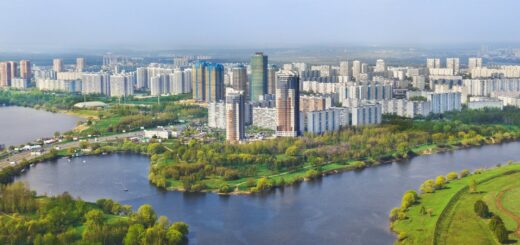Water Issues Between Riparian States : India and Nepal
Delhi: November 2011. Nepal with a geographical area of 1,47,480 sq km has been bestowed with an abundance of water resources in the form of glaciers, snow pack, ground water and river network which” contribute 200 Billion Cubic Meter (BCM) as surface runoff annually to the river basin system. The steep topography and high run-off offer opportunities of generating vast hydropower of the order of 83,000 MW, out of which 44,600 MW has been assessed as being technically feasible. At present, a total installed capacity of all the hydropower plants in Nepal is just over 600 MW that has been developed so far for internal consumption, due to limited financial resources of Nepal. On the other hand, India is short of around 70,000 MW of peaking power for which hydropower is the best option. Therefore, India can look forward to join hands with Nepal in harnessing the hydropower potential and after fulfilling all Nepal’s internal needs avail surplus hydropower from Nepal to meet its own power demand besides augmentation of river flows in non-monsoon period and considerable flood control benefits in monsoon season.
India has concluded several water and power sharing treaties with Nepal the treaties of Sarada (1920), Kosi (1954) and Gandak (1959) are the early examples. Other examples of water sharing is the ‘Mahakali Integrated Treaty (1996) for the integrated development of Mahakali River including the Sarada Barrage, Tanakpur Barrage and Pancheshwar Project. The DPR of the Pancheshwor project was agreed to be prepared within six months of the agreement made, but it has not yet been finalised. However one is told that major progress has been achieved, as the field investigations required for preparation of DPR are completed (except for some confirmatory tests). But mutually acceptable DPR could not be finalized due to differences on following contentious issues:
Apportionment of project (capital) cost
Stage based development
Water availability & existing consumptive uses downstream of the Pancheshwar Dam
Power benefits
Re-regulating structure
There is a realisation now in India that one of the reasons for the stalemate in finalization of the DPR of Pancheshwar Project for the last five years, is the rigid position taken by technical experts on location of the regulating structure, stage based development and sharing of the extra cost chargeable to Irrigation. However, in the process, valuable time and the peaking power (over 10,800 Gwh annually) is being lost by delaying the decision; apart from perpetual flood losses and damage faced by Eastern Uttar Pradesh and Bihar every year during monsoon.
Apart from the fact that there has been no progress at technical level, due to law and order problem and Maoist agitation in Nepal for the last three years, any resolution on the above contentious issues appears to be difficult as the present joint mechanism(s) in vogue are not fully empowered to take independent decisions. A decision in this regards is imperative at the government level appropriately from both sides. A new approach has to be evolved to resolve these issues.
Ministry of Water Resources, Government of Nepal, brought out “Hydro Power Development Policy- 2001”. Its emphasis is on Private Sector participation in the development of hydropower taking into account internal consumption and export possibility.
Since the present atmosphere has become extremely vitiated, our study will examine whether this could perhaps be a key to a fresh approach on the matter. The private sector could be brought in, which could perhaps make Nepal more comfortable. Another approach that could be examined would be a tripartite negotiation by involving Bangladesh. Though the one valid objection to this approach is that tripartite negotiations invariably take longer and are often inconclusive. But, maybe, that could make Nepal more comfortable and less apprehensive in dealing with a larger neighbour. The other approach could be to acceding to Nepal’s demands, but perhaps it is too late for that approach. (October 2011)
Update (2017) :
Matters changed with a new Government at the center.
A revised second detailed project report for the multi-purpose *Pancheshwar dam project had finally been sent to the development authority, which was forwarded to the Indian and Nepalese governments for clearance
The approval of the two stakeholder countries will pave the way for the works to start on the long-awaited project which is expected to fulfill power andirrigation requirements for both countries.
A fresh,updated version of the second DPR, prepared by WAPCOS, was sent last month to Pancheshwar development authority (PDA) which will now forward it to the Indian and Nepalese governments for approval, ” a WAPCOS official at Pancheshwar site said Tuesday.
India and Nepal are the two stakeholders in the ambitious project and WAPCOS is the Indian company entrusted with the task of preparing the DPR.
The fresh DPR is the revised version of the second report sent to the PDA in June, 2017, about which both countries had some reservations.
- *https://www.business-standard.com/article/pti-stories/revised-dpr-for-pancheshwar-dam-sent-to-project-development-authority-118090400608_1.html



